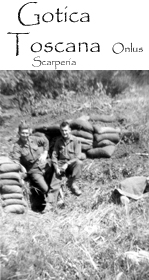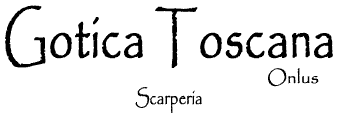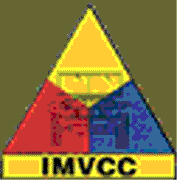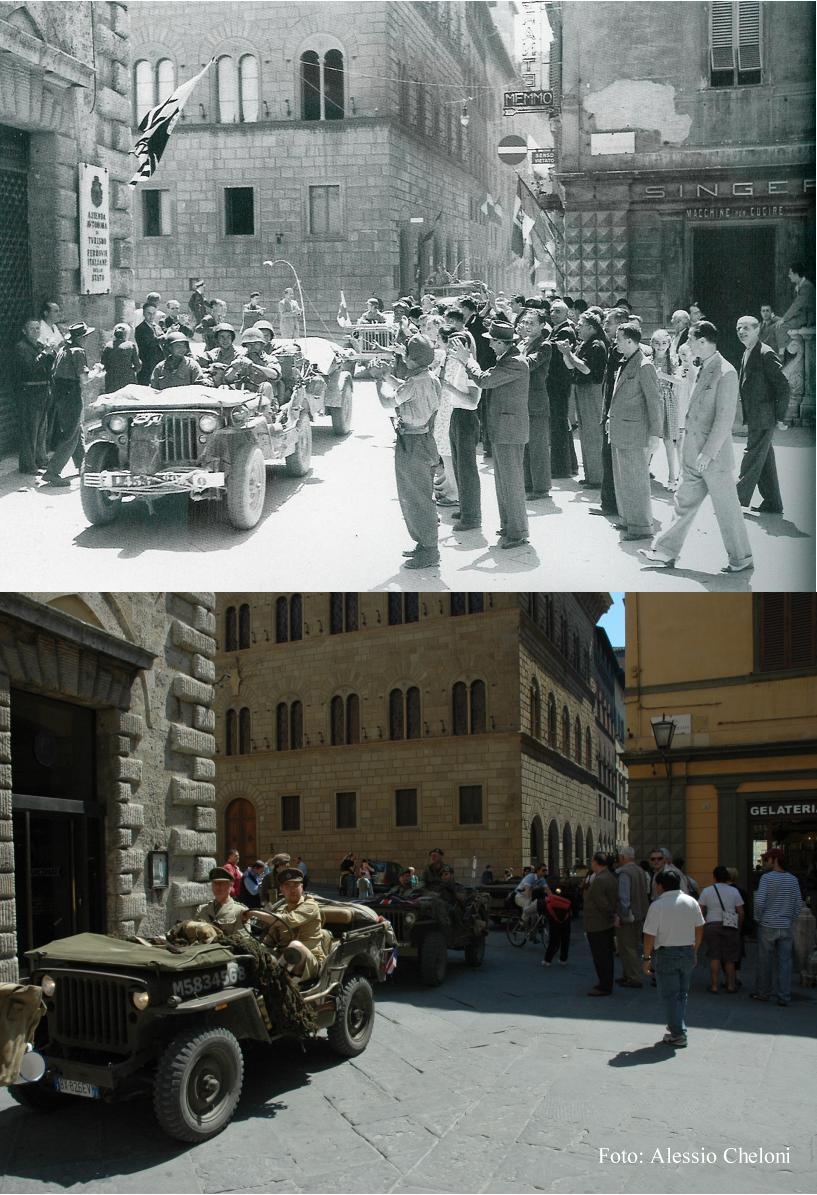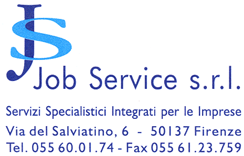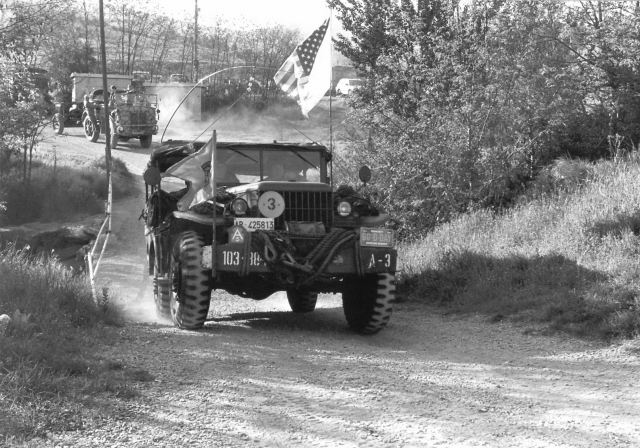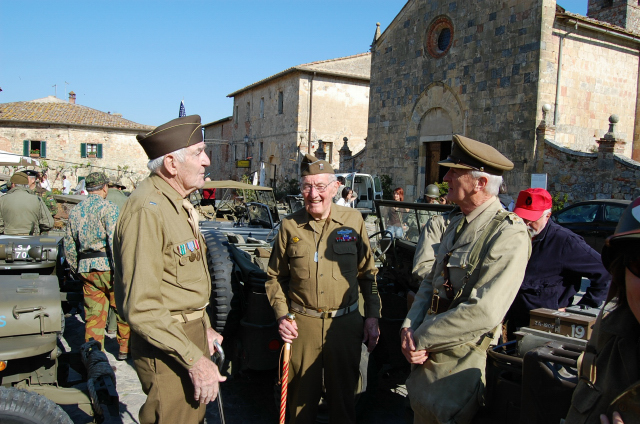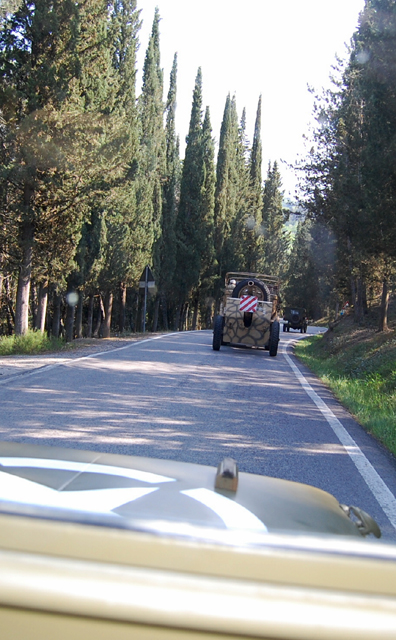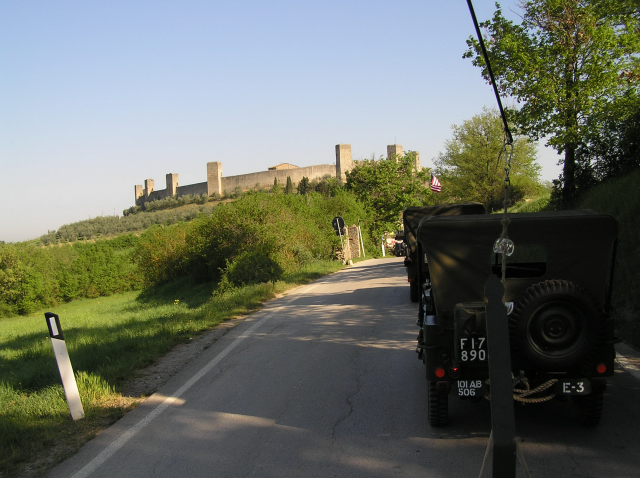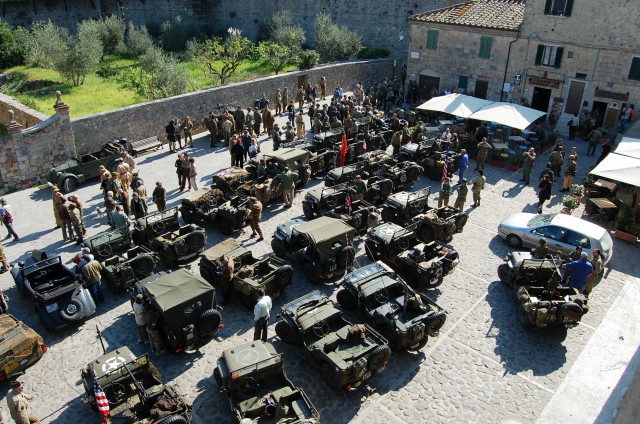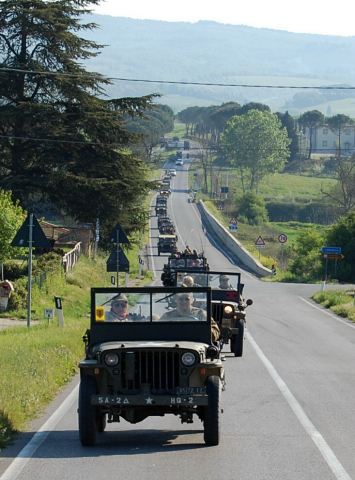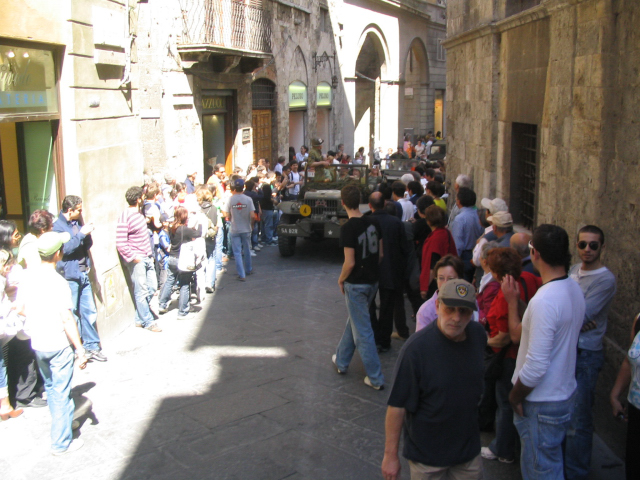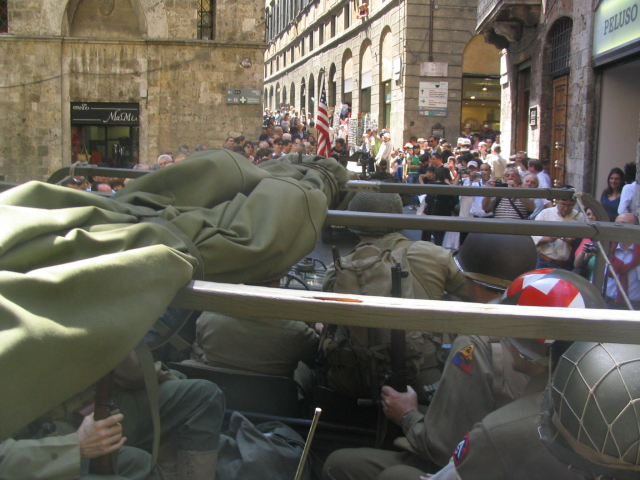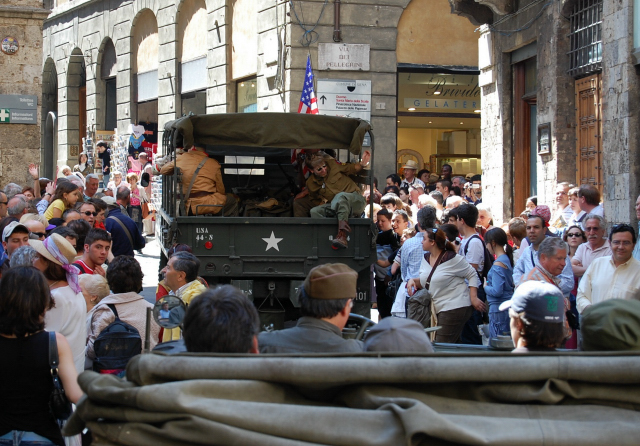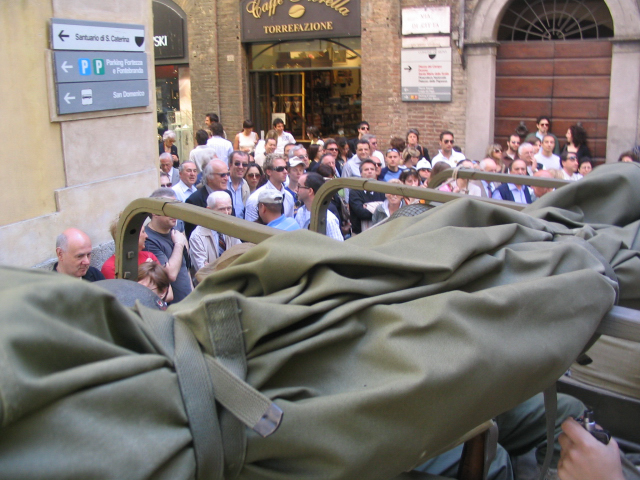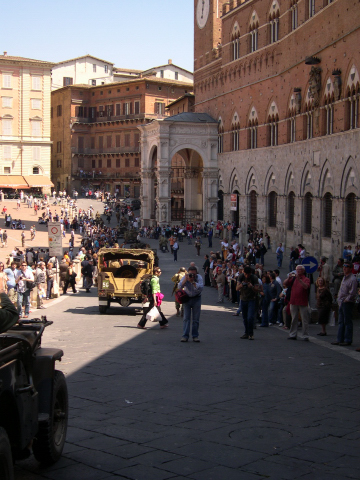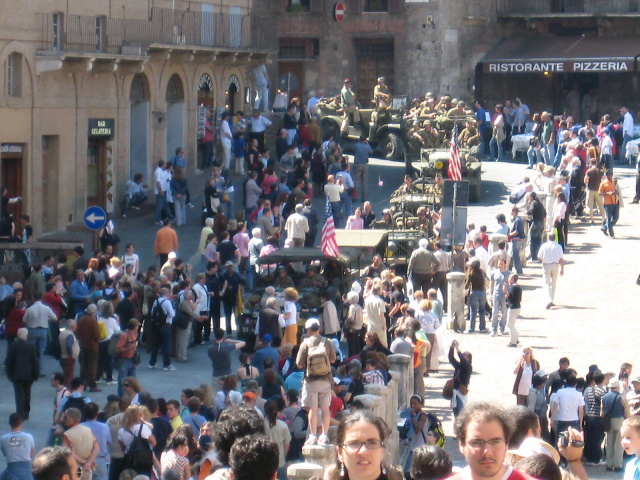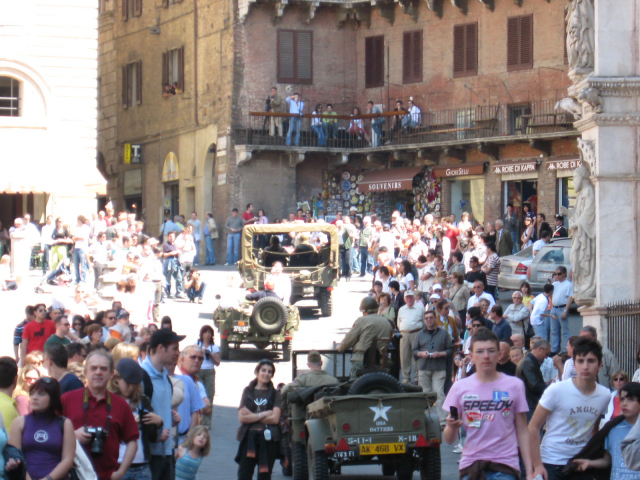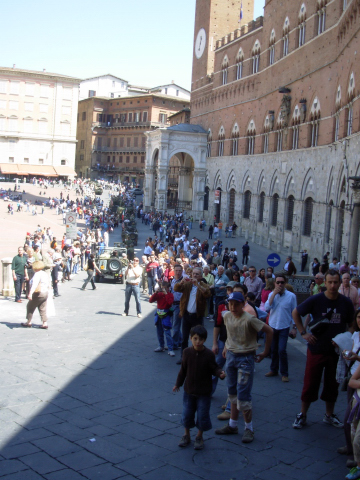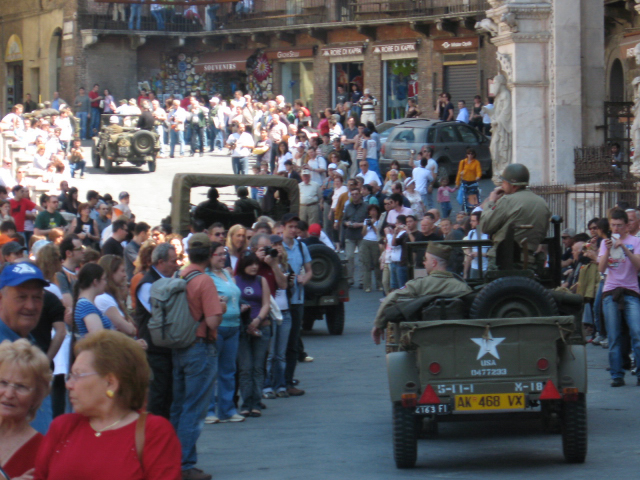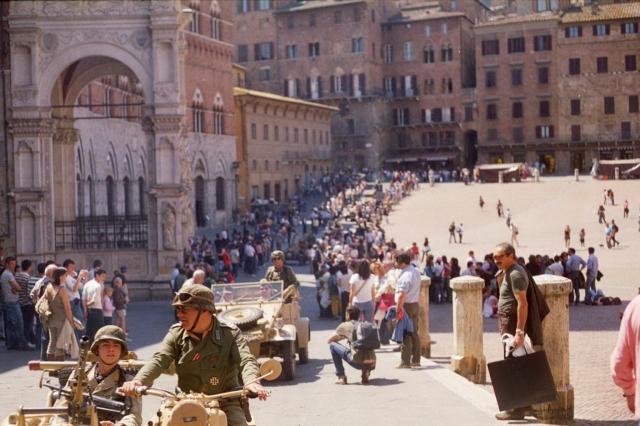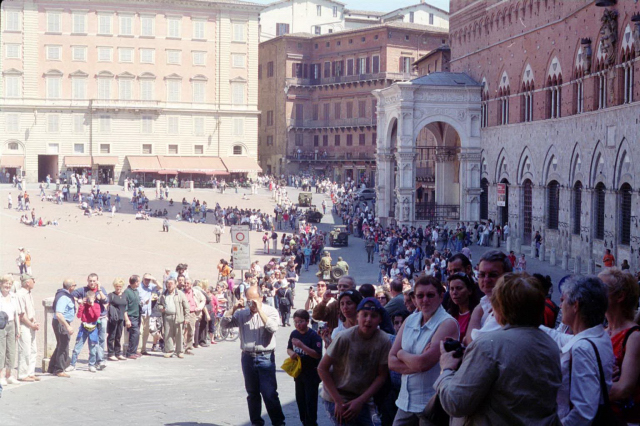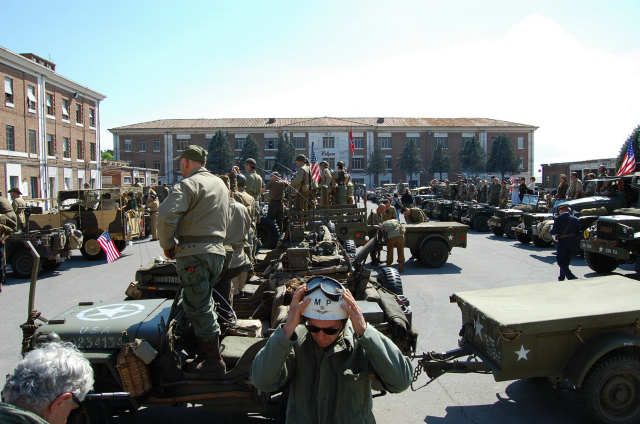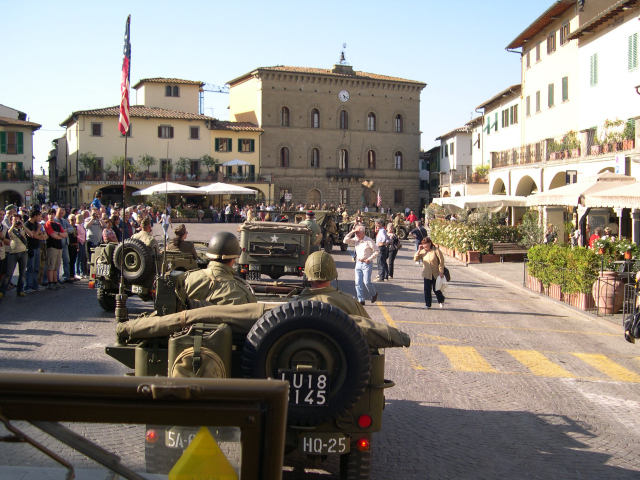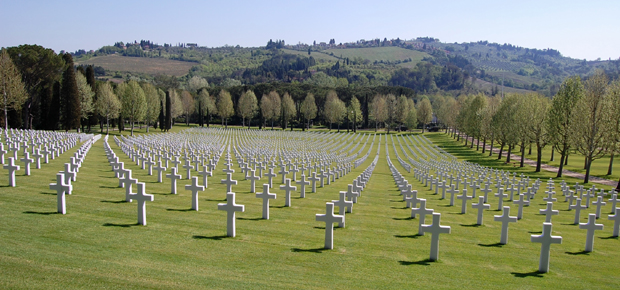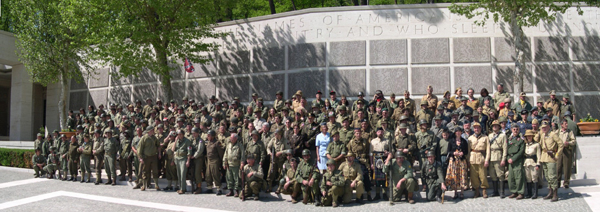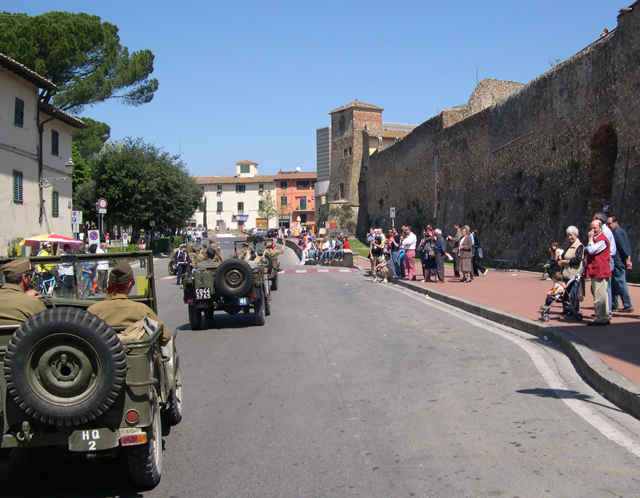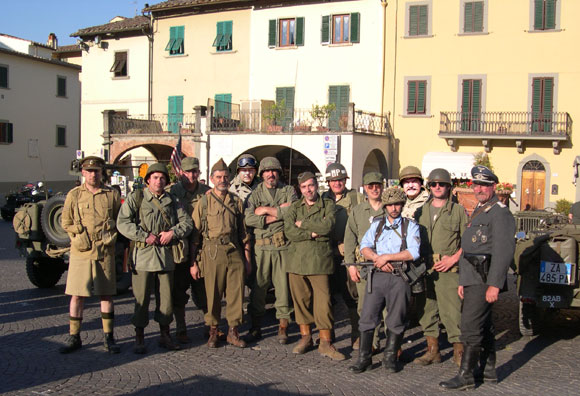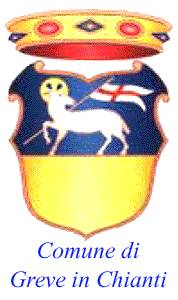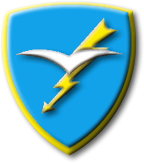|
|
|
|
|
|
|
“ La Strada del Cuore – Chianti 1944 - 2007”20/22 Aprile 2007Greve in Chianti, Monteriggioni, Siena, Strada in Chianti,
WWII HMV’s and reenactors event in the Chianti region of Tuscany (Italy) - A ReportBy Corso P. Boccia and Filippo SpadiPictures by Andrea Gatti, Stefano Giannini, Riccardo Mannaioni, Davide Bandini, Dale Phillips, Alessio Cheloni, Fabio Dovesi, Mario Reano, Nicola Nicotera, Fabio Miniati, Maurizio Beretta, Mirco Mugnai More pictures in the italian section “La strada del cuore” - the route of the heart – that is the name the Allied troops gave Highway 2 during 1944, referring to the road which leads straight to the heart of Florence from the south. It was also a road which cost a lot to conquer, seeing some of the fiercest battles of the Summer of 1944, when the Allied armies, after the liberation of Rome, advanced with the objective to reach as soon as possible the Northern Apennines mountains, hoping to deny the Germans time to entrench on the Gothic Line of defense.
We had the honor and pleasure of having with us again some good friends of ours: 1st Lieutenant Mel Buschman (formerly of Company K, 361st Infantry), Master Sergeant Carl “Dutch” Snyder (formerly of Company L and HQ Company, 133rd Infantry), and Ardito Paracadutista Enrico Bosi (formerly of the Italian “Battaglione Azzurro”). The two US veterans were accompanied by their families, whom we had come to know rather well over the previous years. A little presence in numbers, among so many people, but one that meant a lot, and these elderly gentlemen were the real heroes of our event. Displaying enviable stamina, our special VIP’s spent the long weekend riding our uncomfortable WWII military vehicles, always welcomed by their owners who competed for the honor of acting as chauffeurs for such distinguished guests.
Starting from the left: 1st Lieutenant Mel Buschman (formerly of Company K, 361st Infantry), Master Sergeant Carl “Dutch” To our deep sorrow, just a few weeks after the event, our good friend “Dutch” Snyder passed away peacefully at his cherished home in New Tripoli, PA, among the caring presence of his beloved ones. We find some consolation in knowing through his family that he had a fond appreciation for this last trip to Italy, and we hope his fresh memories of the days he spent with us may have pleased him at times at the close of his life. Carl was a man of uncommon integrity and strength, and he left a powerful impression on all who met him. We will not forget him.
Early on Friday morning, participants started to arrive at our base camp near the Greve in Chianti soccer field, and by noon, 200 people were there. Participants received a gift upon registration, to be chosen between a waist-pouch bearing the GoticaToscana logo, and a bottle of Chianti wine. At the end of the event, we still had a surplus of pouches, how’s that?.
We proceeded according to schedule along our planned itinerary, which gave us a good opportunity to admire the beautifully restored stone houses dotting the hills of the Chianti. We did not have to climb steep hills, and only a British Bedford truck belonging to the “Highway Six” Group from Rome, hampered by cooling problems solved later on, necessitated the intervention of our rescue truck. By early Saturday morning, the count of vehicles was up to about 90- people had kept arriving even in the middle of the night. We noticed some sloppiness in obeying our recommendation for an early start, as everybody had to be ready by 8:00 a.m. We suspect some of our friends had a nightcup too many of that good Chianti wine, back at their lodging places. Our program for the day would carry us first through Castellina in Chianti and the medieval fortress-town of Monteriggioni, where we would have our first and only stop before proceeding to Siena. Since we had to face steep inclines both up and down the many hills of southern Chianti, we formed three separate columns of vehicles, so as to permit heavy vehicles to proceed at the proper pace while not fatiguing the engines of the light trucks and motorbikes.
We reached Monteriggioni at 9:45 traveling along a beautiful itinerary which, in contrast to the previous day, extended mostly over open terrain, giving us a beautiful view of central Tuscany towards the west coast and the Tyrrhenian sea. Monteriggioni, a well preserved fortress town, could accommodate only a few of our light vehicles. The first in column were the lucky ones, and they proceeded up to the village hilltop entering its historic gates, while the rest of our HMVs parked at the base of the hill, so that those who wished to visit the place could reach the town on foot.
We then reformed our column for the final trip to Siena, roughly seven miles away. No separate columns now. We followed the Carabinieri SUV at a uniform speed of about 15 mph, all of our vehicles together, so as to reach Siena in ordered fashion and arrange there for our entry downtown. The British vehicles, at the head of the column, were followed by the US, German, and Italian sections. We reached the spacious Piazza Amendola at the outskirt of medieval Siena, which had been chosen as the final stop before the city tour. That was also the location of the Itaian Army “Bandini” Barracks, home of the 186th “Folgore” Parachute Regiment, where we would have lunch.
At 11:00 a.m., we started the tour of the city following our City Police guides, which had been extremely collaborative also during the planning phase of the event. Our downtown itinerary had been carefully studied in consideration of our bulky vehicles (most downtown Siena is nowadays a no traffic zone). We could not just hit the curbs and go on, as the advancing Sherman tanks had been compelled to do back in 1944! “British” reenactors dismounted vehicles and proceeded on foot at the head of our column, marching in stride with the Scottish tunes played by a bagpiper in kilt. This unusual sound acted as an alert to the tourists crowding the city, as usual. The people of Siena, instead, were not prominent at first. As we later found out, while we had arranged our PR activities with care, the local news had not given the event much publicity, contrary to what happened in the rest of the region. Thus, the “liberators” of today started their march among the puzzled looks of bystanders who could not fathom who we were and what was happening to the world again, what with a foreign army and military vehicles invading the city on a peaceful Saturday morning! With our advance through the city, inquiring faces appeared at the windows. A few at first thought we were the real British Army. That may partly be explained by the prominent presence of our unflappable MVT friend Peter Davies, who rode in the lead vehicle donning a WWII British officer uniform with perfect pose.
Of course, in a while things became clear, as people asked what was happening and why. Interestingly enough, many foreign tourists did not display any similar uneasiness, and just accepted whatever was happening as something nice to photograph and be a spectator to. We find that an interesting fact for social psychologists to study, perhaps. When we reached the world-famous Piazza del Campo, where the traditional “Palio” horse races take place every year, the crowd started cheering at us and enjoyed the show. Our noisy entry into the square gave impulse to a funny migration of people from one side of the Piazza towards our column. By the time the US section of the column had entered the square, a veritable crowd surrounded our vehicles, loaded with uniformed reenactors. A few people even “assaulted” our trucks, to get a picture taken or – as was the case with a few loud, middle-aged ladies, to kiss “the liberators”. There was nothing political in all this, and the German and Italian vehicles were received with the same enthusiasm. Aboard a few of the Italian military cars, some ladies in our group wore vintage dresses, giving a touch of nostalgia to the whole scene.
Our transit in Piazza del Campo over, we completed the tour of the city and returned to Piazza Amendola and our destination at the Caserma Bandini, where we had previously arranged for parking our vehicles in neat display, rows upon rows, as the military barracks would be opened to visitors while we were having lunch in the mess hall. We must extend our most sincere thanks to the CO of the 186th Regiment and to his competent staff, as the success of the event owes a lot to their wholehearted support and efficient collaboration. Before our departure, a short ceremony was held in our honor by the regimental deputy commander, Lt.Col. Fucito (the Regimental Commader being stationed in Lebanon, as mentioned). The 186th Regimental Plaque was exchanged with the IMVCC and GoticaToscana plaques, which we presented Colonel Fucito as a sign of gratitude and friendship.
Our twenty-miles trip back to Greve in Chianti was a pleasant interlude between the full morning in downtown Siena followed by a lively lunch with our military hosts, and the official welcoming celebrations which would take place in Greve in the attendance of local authorities. The early afternoon sun was unseasonally warm for April. We had divided again our column into there sections, and everybody was able to pick up an ideal speed according to vehicles and driving styles. Civilian traffic was scarce, and we reached the assembly point outside Greve in total relaxation.
Sunday April 22, was our final day together, and we had felt it appropriate to devote this crowning occasion of our long weekend to remembering and honoring those who gave their life to liberate our country. Our main destination was the ABMC Florence American Cemetery and Memorial. Its 4,402 headstones represent thirty-nine percent of the U.S. Fifth Army burials originally made between Rome and the Alps, in silent testimony to the ultimate sacrifice of life paid by GIs and airmen who died to liberate Italy. The Florence cemetery (the second for importance in Italy after that at Anzio-Nettuno) is a place we from GoticaToscana know well. Not only do we go visiting there often, we also actively collaborate with its staff and participate to the yearly Memorial Day celebrations, in period uniforms and setting up displays of wartime Army equipment, which have never failed to amuse attending veterans.
Finally, it was time to move, our next destination the town of San Casciano, liberated in 1944 by the 2nd New Zealand Division, where again our column mixed up with the local population, for everybody’s joy, children of course being particularly delighted by the occasion. Then, our final trip to San Polo in Chianti, where we had our farewell lunch together. We had planned on an open-air lunch, but we could never have imagined the sun would shine down on us with a force more typical of a midsummer day than of late April! It took some time to straighten things out and rearrange tables so as to take shelter from the beating sun, but then all was ok.
A little sadness for the end of our days together mixed with the gaiety of the occasion, but the predominant feeling was one of happiness and satisfaction. Everything had worked well, and all of us had enjoyed our stay in the beautiful Tuscan countryside, the food, and the characteristic country inns or hotels. As usual, the good outcome of the event was the result of a common effort by many, of shared passion and friendships. We are happy our activities over the last few years have contributed to furthering a new climate of collaboration and positive thinking among Italian collectors and clubs. We are confident that by continuing to work together in the future, we will be able to enjoy together new occasions for sharing a common passion, also with the aim of enhancing the Italian contribution to the international HMV scene.
Thanks to all for the result of the event |
| [Welcome - Benvenuti] |
|
With the collaboration of the
Brigata Paracadutisti
|
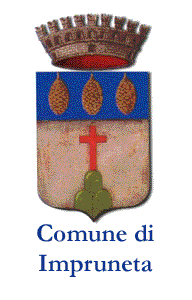 |
Municipality of
San Casciano
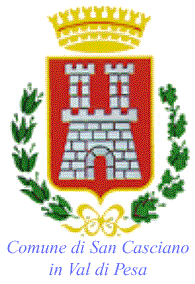 |
County of Firenze
 |
